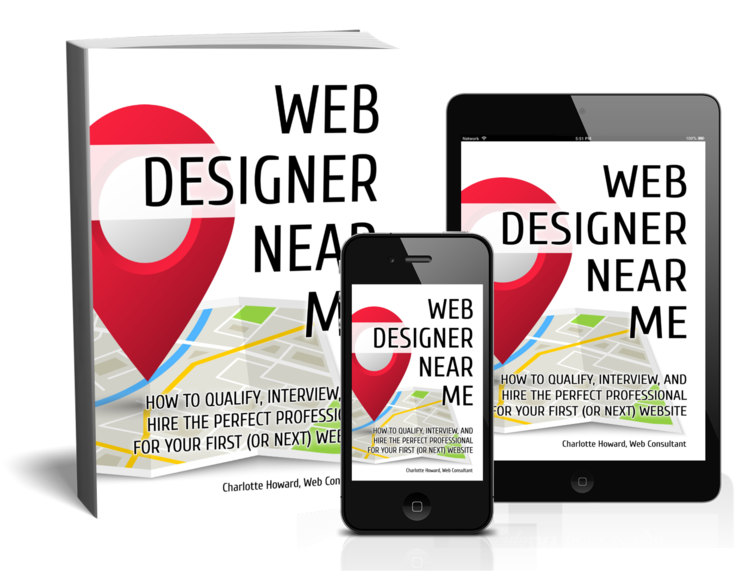SEO and Accessibility: The New Power Couple in Performance Web Design
Whether you’re designing a brand-new website or giving your current one a fresh look, starting with the right foundation is essential to creating a site that works for everyone.
SEO and accessibility are two cornerstones that not only help people find your website but also ensure that everyone, regardless of ability, can engage with it seamlessly.
By focusing on these two elements from the start, you create a site that’s discoverable, inclusive, and designed for long-term success.
Why Start With SEO and Accessibility?
SEO (Search Engine Optimization) helps ensure your website gets seen by potential customers through search engines like Google. When your site ranks well in search results, it becomes more visible, leading to increased traffic and more conversions.
Accessibility, on the other hand, ensures that your website is usable by everyone, including people with disabilities. This is not only an ethical thing to do, but it also expands your audience and provides better user experiences for all visitors, including those using assistive technologies.
The beauty of designing with SEO and accessibility in mind is that these two disciplines often overlap.
They both prioritize clear, clean code, logical structure, quality content, and fast performance—all characteristics that both search engines and users alike appreciate.
Key Foundational Elements to Focus On
Semantic HTML Structured Data
Using semantic HTML (e.g., correct heading tags, lists, and meaningful elements) makes content more comprehensible to both assistive technologies and search engines. These HTML elements provide context about the importance and type of information, making it easier for search engines to index it properly. Accessibility also benefits from proper semantic HTML as it allows screen readers to accurately interpret content, making navigation smoother for users with disabilities.
Proper Use of Heading Hierarchy
An organized heading hierarchy (H1, H2, H3, etc.) is essential for making content accessible to users who rely on screen readers to understand the ideal flow of a page. Search engines also use headings to determine the page structure and relevance of the content. Proper heading usage helps improve both accessibility and SEO by making the information easier to parse and navigate for both search engines and users.
Mobile-Friendly Design
In today’s digital landscape, a mobile-first design is a necessity. Google considers mobile usability as a ranking factor, and an accessible mobile layout ensures everyone—no matter their device—can easily navigate your website. Ensure that text is readable, buttons are easily clickable, and navigation menus are straightforward for users on smaller screens.
Alt Text for Images
Alt text not only describes images to visually impaired users but also provides search engines with contextual information about what’s in those images. Make sure each image on your site includes concise, descriptive alt text—this is a simple yet powerful way to improve accessibility and SEO at the same time.
Descriptive, Clear Content
Writing clear, concise, and informative content helps both search engines and users. Using headings to break up content makes the information easier to digest, while descriptive anchor text ensures that links make sense out of context—which is beneficial for SEO and for users who rely on assistive devices.
Accessible Forms
Forms are a common pain point for accessibility. Make sure your forms are labeled correctly, using the <label> tag associated with form fields so screen readers can assist users accurately. Additionally, error messages should be clearly visible and explained.
Page Speed Optimization
Both SEO and accessibility benefit from a fast-loading site. A sluggish website can cause frustration for users and negatively impact your search engine ranking. Minimize image sizes, leverage browser caching, and reduce unnecessary scripts to keep your site performing well.
Keyboard Navigation
Many users rely on keyboards instead of a mouse to navigate the web. Make sure your site is fully accessible via keyboard, ensuring that users can tab through interactive elements such as links, buttons, and form fields easily.
Accessible Video and Audio Content
Adding closed captions and transcripts for video and audio content not only helps users who are deaf or hard of hearing but also provides SEO benefits. Search engines can crawl transcripts, giving your multimedia content a better chance of ranking in search results.
Integrating SEO and Accessibility During the Design Process
- Design With Simplicity in Mind: A simple, intuitive layout benefits everyone. Clean designs help search engines crawl your site easily and allow users to find what they need quickly.
- Use Tools and Testing: Automated tools like Lighthouse or Wave can help identify accessibility and SEO issues early on. Regular testing throughout the design and development process ensures that your website remains compliant and optimized.
- Involve Real Users: Engaging users with disabilities during the testing phase is a game-changer. They provide direct insights into the challenges and offer ideas for a more inclusive user experience, which helps you create a more accessible website that’s better for everyone.
The Benefits of an SEO and Accessibility-First Approach
- Improved User Experience: By making your website accessible and search-friendly, you’re also creating a better overall user experience for everyone.
- Higher Search Rankings: Google rewards websites that are well-structured, fast, and user-friendly. Accessibility and SEO are a powerful combination that helps boost your search engine rankings.
- Increased Audience Reach: Accessibility ensures that users with disabilities can interact with your content, while SEO attracts visitors through organic search—together, they increase your total addressable market.
- Future-Proof Your Website: SEO and accessibility are long-term investments. With the right foundation, your website will adapt more easily to algorithm changes and new accessibility standards, saving you from costly redesigns and accessibility remediation down the line.
Built-In Performance and Protection
Designing your website with SEO and accessibility as core elements means building in performance enhancements and legal protection from the start.
Performance Improvements come naturally with a focus on SEO and accessibility. Fast-loading pages, optimized images, clean code, and a mobile-friendly design all contribute to a smoother user experience. Not only does this improve your SEO rankings, but it also keeps users engaged, reducing bounce rates and increasing conversions. High-performing websites are more likely to convert visitors into customers, making your investment in optimization directly tied to increased customer loyalty and revenue.
Protection from Accessibility-Related Litigation is another critical benefit. Many businesses have faced lawsuits for failing to provide accessible websites, as accessibility is increasingly being seen as a right, not a privilege. By proactively designing for accessibility, you reduce the risk of such litigation. Compliance with standards like WCAG 2.1 Level AA (Web Content Accessibility Guidelines) helps ensure your site meets legal requirements, providing peace of mind for your business. Investing in accessibility is not just about avoiding lawsuits—it’s about demonstrating your commitment to inclusivity and responsibility, which strengthens your brand’s reputation.
Conclusion
Designing or redesigning a website with SEO and accessibility as foundational elements creates a more inclusive, discoverable, and user-friendly space. When you focus on these elements from the beginning, you’re not only building a better site for search engines but also for real people—making your website welcoming, effective, and future-proof.
Are you planning a website redesign? Make sure you’re setting the right foundation from the start. Reach out to learn how we can help you build a site that’s optimized for search engines, accessible to all, and designed to drive growth.
Click here if you require an in-depth Web Accessibility Audit ⇒
Learn more about our ADA-Compliant Website Solutions ⇒
Start your accessibility journey today!
Fill out the form: Provide details about your website in the form below, and we’ll take it from there.


